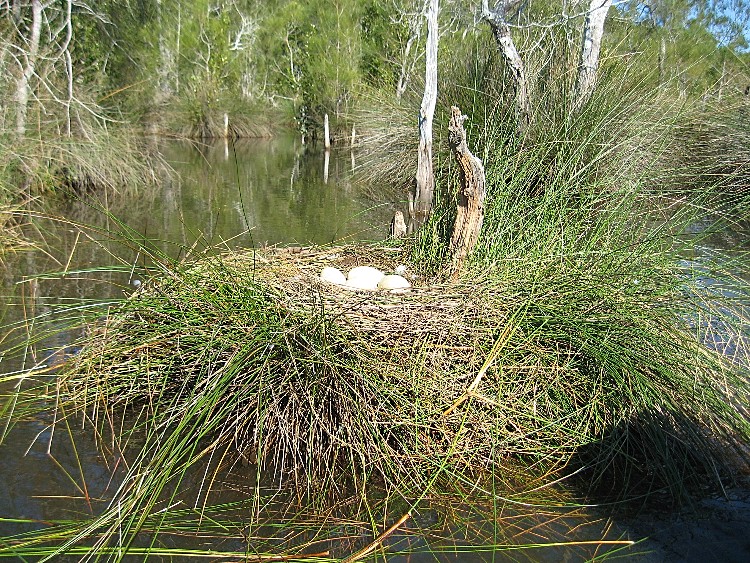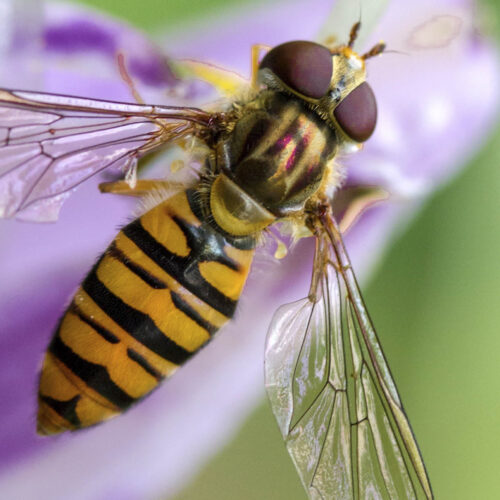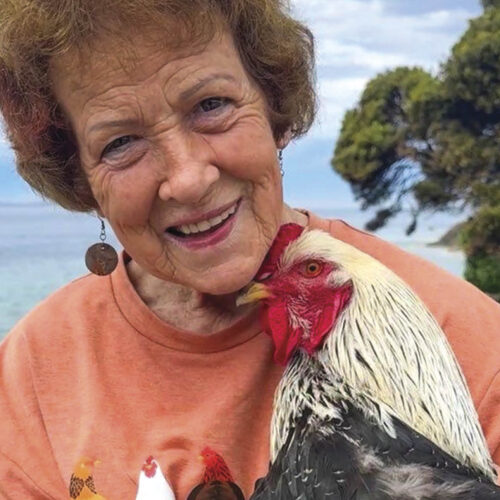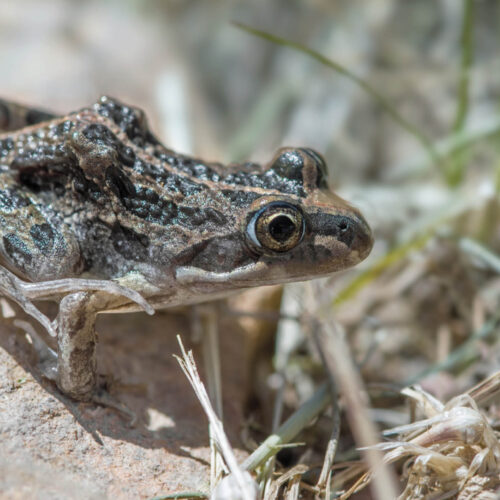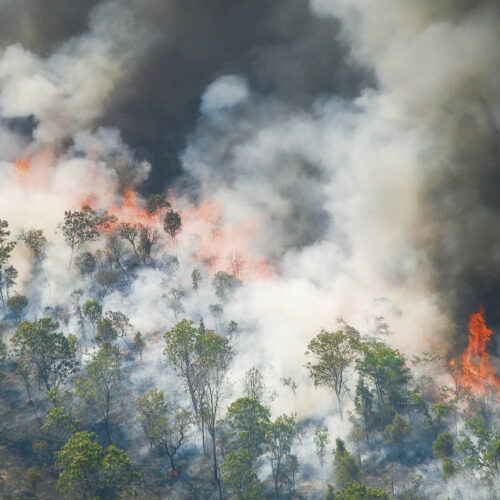The best backyard in Australia
2010-02-12T01:29:43+11:00
Dennis and Marilyn Ryan grow native foods and organic citrus on their property near Macksville (NSW), but caring for the valuable wetland that laps their backyard is just as big a passion.
People tend to make a lot of claims that don’t stand up, but when Dennis Ryan tells you he has the “best backyard in Australia” you can easily believe him. Not only does he have a thriving organic vegetable patch, a highly-productive citrus grove, hundreds of macadamia trees and dozens of other bush tucker plants, his 45-hectare property also backs onto one of the most important wetlands in Australia.
This once remote area of tidal marshland and estuary connects up with the Nambucca River, just west of Macksville, on the New South Wales mid-north coast. He’s taking me on a canoe tour and telling me some of the wetlands history.
“My grandfather spent most of his life trying to drain it, to make this area more European,” Dennis says, as his canoe paddle dips into the shallow, tannin-stained water. “He used a shovel and an axe to make floodgates and miles of drains – but luckily for me and the wildlife, he failed.”
Today, the 73-hectare waterway – known traditionally as the Hundred Acre Swamp – is home to some 117 species of birds, including jabirus, egrets, flycatchers and azure kingfishers. More than 400 black swans nest here, ospreys keep watch from a giant ironbark tree, and the water teems with prawns and native fish.
“An Aboriginal friend of mine talked me into doing canoe tours,” Dennis said. “He reckoned I had to show people if I wanted to save the place.”
One of nature’s guardians
Although the wetland is not under immediate threat, Dennis has become its guardian. He’s also seen water flows into the wetland reduced over the years as more demands are put on surrounding waterways. His enthusiasm for the wetland persuaded the owners of the seven other properties that backed onto the waterway to work together to get it placed on the Directory of Important Wetlands of Australia in 2008. But he wants more.
He is working on securing a Ramsar listing which would formally rate the wetlands as a waterway of international significance. Keeping it special Dennis and his wife Marilyn bought the former cattle farm from his uncle in 1989, and renamed it Valley of the Mist.
“Some afternoons, when it finishes raining, a cloud forms over the wetlands beneath the trees,” Dennis says.
The Ryans abandoned the cows and crop chemicals and started growing native foods (‘bush tucker’ as many still call it) using sustainable methods. He now runs native food tasting tours, as well as educational canoe trips.
“There are just seven canoe trips a week,” he says. “I don’t want it to turn into simply tourism. I want it to remain special. We use the wildlife and the wetlands as much as they use us.”
On our journey, we paddle past tiny islands of reeds and she-oaks. Some islands are so small that they only support a single stunted sapling. The wetland is so shallow that the canoe’s hull cuts through the pondweed. Slipping between two mounds of paperbarks, we move into a slightly deeper and wider channel marked by mangroves and a half-flooded fence, put up by Dennis’s grandfather around 1928.
Birds are calling from all directions, and we watch as dozens of ducks take off in a noisy flurry of beating wings. At one point, 80 black swans glide by. Later, hundreds of flycatchers dart across the surface, picking insects out of the air.
Bush medicine
Back on dry land Dennis showed us around the wetland’s swampy edge, pointing out various trees and shrubs, and stopping occasionally to crush a leaf or inspect a dry seed head.
“My mum spoke the local Aboriginal dialect,” Denis said. “She learnt it as a kid. Years ago, in spring, the Aboriginal women would come when the paperbark trees were in flower. It was the time of the mullet run. My grandmother traded with them for bush medicine. We’ve been using it ever since.”
Dennis still boils up tea tree leaves for coughs and colds. A corkwood tree grabbed his attention.
“The Aborigines used to grind up the bark and put it in the water,” he said. “It made the fish unconscious. It used to be used in eye surgery as well. It would collapse the muscles in the face. I used to make pocket money collecting it as a kid. The leaves were sent to France for the chemist to extract the chemicals, until it was synthesised in the ’60s.”
He moved on to a clump of sedge. The local Aboriginal women used to collect the tiny brown seeds and grind them up to make bread. Then there was the lillypilly (rieberry) tree. Aborigines would crush the leaves and boil them along with the seeds and bark “to prevent diabetes”, Dennis explained.
Natural pest control
Not far away was the beginning of his native foods orchard. We strolled through neat rows of native Davidson plums. Uncooked they are extremely sour, but very high in vitamin C. There were also some seedless finger lime shrubs, and some 600 macadamia trees.
“When I started to plant bush tucker I sprayed with natural pyrethrum,” Dennis said. “But then, as I watched one day, I saw thousands of dragonflies appear and snatch the bugs out of the air. So I don’t have to worry about sprays any more. There are no mosquitoes out on the swamp either, probably because of all the fish and the dragonflies.”
Dennis also encouraged birds to do their natural job of insect hunting by planting plenty of native trees around the orchard. Bandicoots, water dragons, goannas, echidna, six species of wallaby and kangaroo, and introduced deer are all regular visitors.
“Without wildlife and insects something will suffer,” he philosophised. “Even the rats, the bad things… you need everything here. The rats feed the owls and the hawks. The red-bellied black snakes keep the brown snakes and tiger snakes away. Most people run for a stick as soon as they see a red belly.”
After our stroll, we returned to his rustic homestead and sat around a table, eating fresh macadamia chutney, made by his wife, ‘bush tucker’ sausages from a local supplier, and home-made macadamia shortbread for dessert. The nuts were organic, and tasted remarkable sweet and fresh, unlike any I’d tasted before. As we ate and talked a range of heritage breed chickens – Gold and Silver Sebrights, Golden Laced Wyandotte and Indian Game – wandered around outside the door, scratching and fertilising.
Fruit and veg
After lunch Dennis showed me the large, productive vegetable patch. As well as growing all their own bush tucker to eat, and more to sell, the couple grow their own vegetables and “even do some bartering.”
They also grow tea – and there are always eggs. Dennis showed me a clump of Warrigal greens. “This variety has been in our family for more than 50 years,” he noted.
Old CDs are hung to act as bird scarers.“I’ve tried almost everything and they’re the best by far.”
A fig tree supplies food for the table but “lots are left on the tree for the birds.” Visitors leave the property with cuttings of lemon myrtle, to keep leeches, ticks and mosquitoes away.
“No need to use chemicals or hormones to get lemon myrtle to root,” Dennis told me. “Just dip them in honey.”
A separate organic citrus orchard produces enough oranges, limes, lemons, mandarins and tangerines for the couple’s needs, and those of their guests and neighbours.
“It’s a nice feeling to go and get a basket of citrus and see someone’s face light up,” he said. “I don’t care what people say, but organic makes for a beautiful sweet fruit. When the old folk try an orange and say, ‘It tastes just like when I was a kid’, then that tells me everything.”

